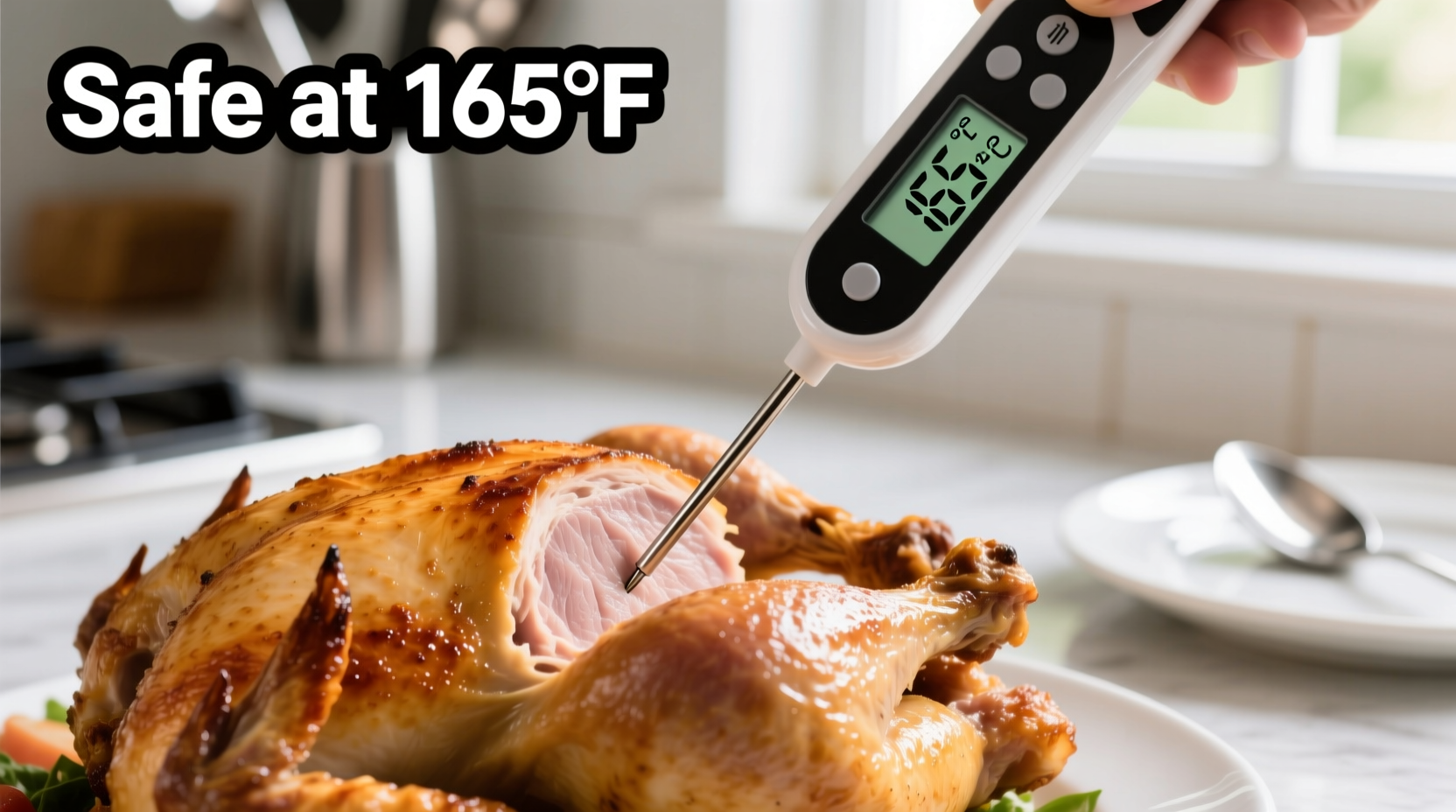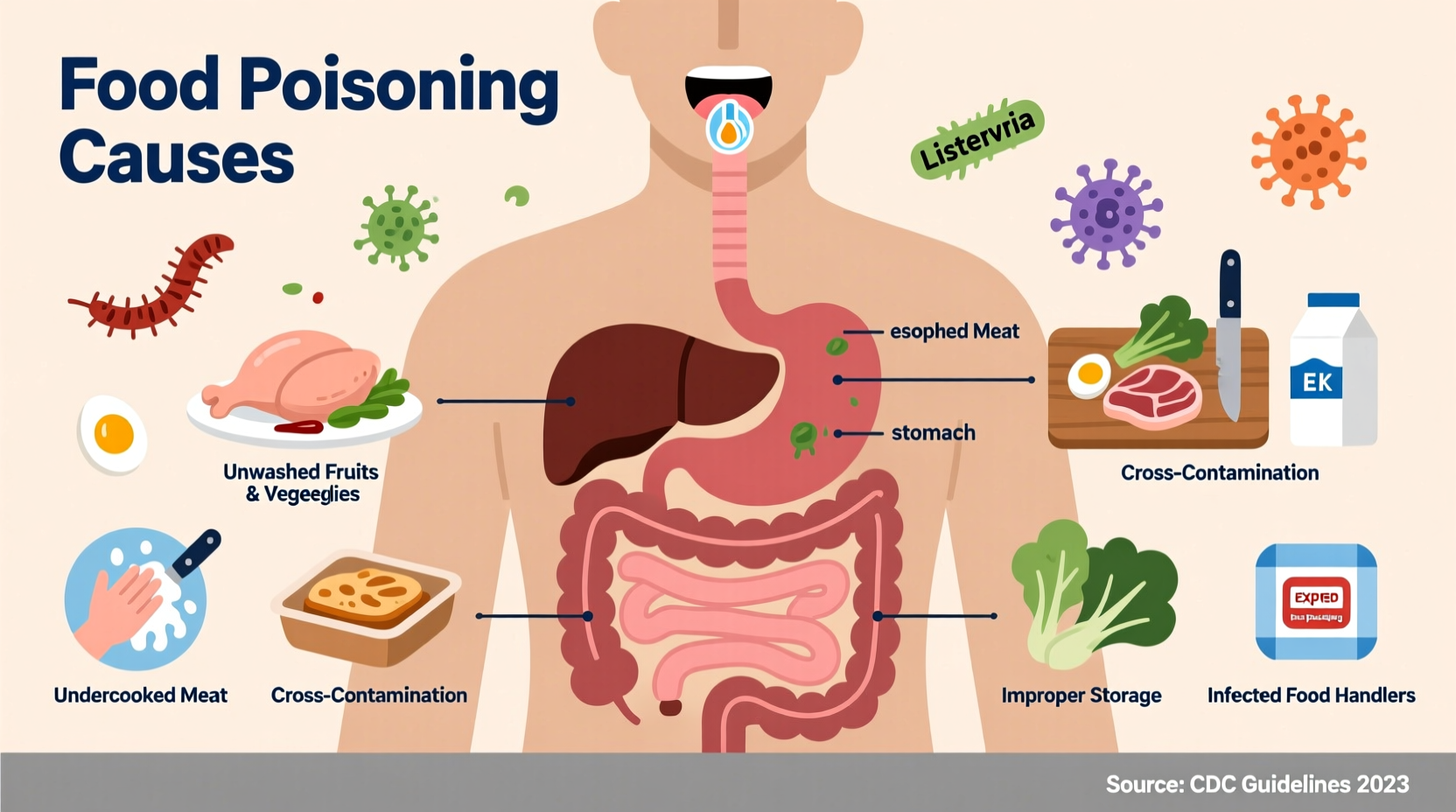Each year, one in six Americans experiences foodborne illness, with over 250 different pathogens and toxins identified as culprits. Understanding what causes food poisoning isn't just academic knowledge—it's essential for protecting yourself and your family from preventable illness. This guide reveals the specific contamination sources you encounter daily, backed by the latest food safety research from leading health authorities.
Top Pathogens Behind Food Poisoning Cases
While numerous microorganisms can cause foodborne illness, certain pathogens dominate reported cases. The Centers for Disease Control and Prevention (CDC) tracks these through the Foodborne Diseases Active Surveillance Network (FoodNet), providing crucial data on what makes people sick most frequently.
| Pathogen | Common Sources | Incubation Period | Annual US Cases |
|---|---|---|---|
| Norovirus | Ready-to-eat foods, shellfish, contaminated water | 12-48 hours | 19-21 million |
| Salmonella | Raw eggs, poultry, meat, unpasteurized milk | 6-6 days | 1.35 million |
| E. coli (STEC) | Undercooked ground beef, raw produce, unpasteurized juice | 3-4 days | 265,000 |
| Campylobacter | Raw or undercooked poultry, unpasteurized milk | 2-5 days | 1.5 million |
Data source: CDC Foodborne Diseases Burden Estimates
How Bacteria Become Dangerous in Your Food
Bacteria cause most food poisoning cases, but they don't start out dangerous. Understanding the contamination timeline reveals preventable points in the food chain:
- Initial contamination: Pathogens enter food during growing, harvesting, or processing (e.g., animal feces contacting produce)
- Growth phase: When food sits in the "danger zone" (40°F-140°F), bacteria multiply rapidly—some doubling every 20 minutes
- Consumption: People eat contaminated food, often unaware of the invisible threat
- Incubation: Pathogens establish in the digestive system before symptoms appear
This progression explains why seemingly normal-tasting food can make you sick. The FDA Food Code specifies that potentially hazardous foods shouldn't remain in the temperature danger zone for more than 4 hours total.
High-Risk Foods You Should Handle Carefully
Certain foods create ideal environments for pathogen growth. The FDA identifies these as Time/Temperature Control for Safety (TCS) foods that require special handling:
- Poultry and meat: Raw chicken contains Campylobacter in 97% of supermarket samples according to USDA testing
- Raw eggs: Salmonella can be present inside intact eggs, not just on shells
- Unpasteurized dairy: Raw milk is 150 times more likely to cause illness than pasteurized products
- Leafy greens: Multiple E. coli outbreaks traced to romaine lettuce in recent years
- Raw shellfish: Oysters filter large water volumes, concentrating pathogens like Vibrio
These foods aren't inherently dangerous, but they require proper handling to prevent food poisoning causes from becoming actual illness.
Cross-Contamination: The Silent Food Poisoning Culprit
One of the most common yet overlooked causes of food poisoning is cross-contamination—when pathogens transfer from one surface to another. This happens more frequently than many realize:
- Using the same cutting board for raw meat and vegetables without proper cleaning
- Storing raw meat above ready-to-eat foods in the refrigerator
- Handling money then food without washing hands
- Using a single towel for multiple kitchen tasks
A University of Arizona study found that 75% of kitchen sponges contain harmful bacteria, making them significant cross-contamination vectors. Proper kitchen hygiene breaks this transmission chain.

Prevention Strategies That Actually Work
Knowledge of food poisoning causes is only valuable when translated to prevention. Implement these evidence-based strategies:
Cook to Safe Internal Temperatures
Use a food thermometer—color and texture are unreliable indicators. The USDA recommends:
- Poultry: 165°F (73.9°C)
- Ground meats: 160°F (71.1°C)
- Fish: 145°F (62.8°C) or until flesh flakes easily
- Leftovers: 165°F (73.9°C)
Prevent Cross-Contamination
Adopt these kitchen habits:
- Use separate cutting boards for produce and animal products
- Wash hands thoroughly after handling raw foods
- Clean countertops with appropriate sanitizers (1 tbsp bleach per gallon of water)
- Replace kitchen sponges weekly or sanitize daily
Store Food Properly
Refrigerate perishables within 2 hours (1 hour if above 90°F). Keep your refrigerator at 40°F or below—use an appliance thermometer to verify, as built-in dials are often inaccurate.
When Food Poisoning Causes Become Medical Emergencies
While most foodborne illnesses resolve within days, certain situations require immediate medical attention. Seek help if you experience:
- Signs of dehydration (reduced urination, dry mouth, dizziness)
- Diarrhea lasting more than 3 days
- Severe abdominal pain or cramping
- Blood in stool or vomit
- Neurological symptoms like blurred vision or muscle weakness
High-risk populations—including infants, elderly adults, pregnant women, and immunocompromised individuals—should contact healthcare providers at the first sign of foodborne illness.











 浙公网安备
33010002000092号
浙公网安备
33010002000092号 浙B2-20120091-4
浙B2-20120091-4